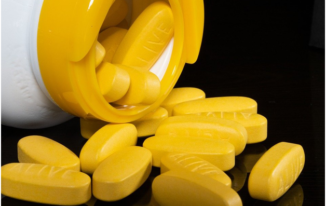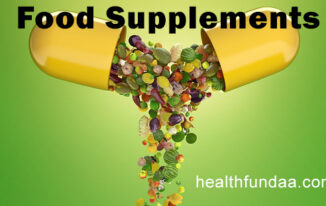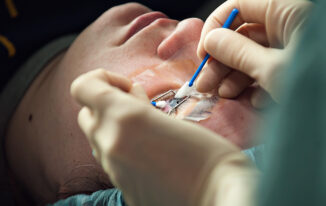With advances in technology, the manufacturing process of many pharmaceuticals has taken on a new level. Although these advancements have allowed for safer medications, specific areas such as the environment and quality control may need more attention. If you’d like to learn more about this topic, check out this article.
You may want to get help with the drugs you’re formulating from the clinical trials until their commercial production in the pharmaceutical industry. This is where the finished dosage forms or FDF can be very helpful. This will refer to the finalized medicine that’s ready for consumption. It can generally take various forms, including liquid solutions, capsules, and tablets. They may contain active pharmaceutical ingredients that are mixed with other inactive compounds.
About the API
Active pharmaceutical ingredients are one of the components of medicine that enacts the drugs’ intended effect on the body. For example, acetaminophen is generally used as a pain reliever, which is why it’s present in many over-the-counter painkillers. On the other hand, there may be other ingredients present, like dyes that can be used in pills to undergo specific colors, but they don’t have any pain-killing effects. However, they may have side effects, and they can have a particular impact on many people depending on the ingredients used.
The Need for a Sterile Process
Sterile pharmaceutical manufacturing is a process that starts with the raw materials of drugs and ends with the finished product. This process must be done in a clean environment to ensure that the products are safe for patients. The process requires a lot of specialized equipment and techniques, and it must be done in a tightly controlled setting to ensure that the products are safe and free from unnecessary ingredients.
A sterile pharmaceutical manufacturing process is an essential component of maintaining the safety and quality of pharmaceuticals. It helps prevent the transfer of microorganisms, which can cause adverse drug reactions. This is where sterile fill-finish and aseptic manufacturing may be used.
Others require self-contained equipment during the entire production. The benefits of a sterile pharmaceutical manufacturing process are clear: fewer adverse drug reactions, greater safety, quality assurance, and reduced costs. See more about reduced costs in pharmaceutical industries when you click here.
In addition to ensuring the safety and quality of pharmaceuticals, a sterile process can also improve efficiency and productivity. The elimination of cross-contamination between different areas of a manufacturing plant can significantly reduce labor costs, enhance customer safety, follow the regulations set by the FDA, and many more.
Others may be providing the injectable drugs, and these are the ones that may bypass the natural filters present in the body, such as in the case of digestion. This is where the delivery should be terminally sterilized and put into autoclaves to protect them against viruses and bacteria.
The process of terminal sterilization is often conducted after a medication has used filtration, radiation, heat, and other means. When the formulations are complicated, some of the drugs can’t undergo terminal sterilization because the active ingredients become less effective when exposed to radiation.
The aseptic fill-in finish is a system where the product, container, or equipment are first sterilized in a different place. Then they are brought and assembled in another location. The steps may contain cleaning the containers and products in a room using special equipment, which is included in sterile environments. Overall, this will be complex and challenging if you’re unsure of what you’re doing.
This is where a CDMO can assist you. With complex production, many pharmaceutical companies are partnering with the proper contract development and manufacturing company so they will know what to do and what tests to perform.
The right people will assist you with the fill-finish, sterile development, tests, and manufacturing processes to ensure that you’re creating something safe and effective. Learn more about fill-finish on this page: https://www.lawinsider.com/dictionary/fillfinish.
Benefits of Sterile Manufacturing
As the world becomes increasingly populated and more people become susceptible to illnesses, people must have accessible and effective medicines to cure various medical conditions. To ensure this happens, companies must use sterile manufacturing practices to produce their products. Here are some of the benefits of using the method:
- Pharmaceuticals are Safe for Consumers – Sterile manufacturing techniques help to ensure that no contaminants enter the final product, and it’s safe for consumers. They can be present in vials where analytical chromatography is performed or in syringes that are often used to withdraw fluids or inject them into the body.
- The Medications are Effective – By using sterile manufacturing techniques, pharmaceutical companies can ensure that their products are effective and backed by scientific research. A vaccine or cartridge should work well against infectious diseases, and a CDMO can help you determine the correct dose.
- Pharmaceuticals are more Reliable – Due to the high level of safety and effectiveness of sterile manufacturing, many companies can be confident in their products’ reliability when they work with the right CDMO.







“Nice info!” Thanks for sharing this article,
Thank you so much for sharing the informative knowledge about the innovative process of the pharma industry. I learned many useful tips after reading this article. I am looking forward to learning more from your blog.
Thanks for sharing this information.best addiction treatment center in Lahore
Before my career as a physician, I worked at a Pharmaceutical Manufacturing Company. I was in charge of sampling the raw material to be sent for quality inspection and writing the Operating Procedure Manuals for the area, too. It is a very strict process where with only one contaminated sample, the company had to dispose the entire batch. Thanks for your post.
Nice posting about health thanks you so much!
Shaikh Abdul Taha recently posted…Red Teddy Bear
Such an informative blog. Thank you for writing this.